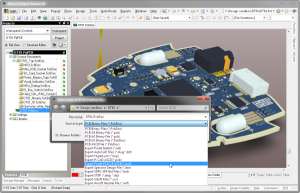Printed Circuit Board Reverse Engineering Material Analysis
Printed Circuit Board Reverse Engineering Material Analysis
The objective of material analysis when Printed Circuit Board Reverse Engineering Material Analysis which including chemical and metallurgical analysis, should be performed to determine the composition, surface treatments, finishes, hardness, and heat treatments pertinent to each piece-part/component. For example, for printed circuit board reverse engineering material analysis, we should collect the basic information about the manufacturing material, for single side and double side printed circuit board, total thickness, material type whether is normal fiber glass resin or high TG or TD material, as well as ceramical or aluminiam substrate.
Regarding to Printed Circuit Board Reverse Engineering Material Analysis, lay-up structure is very important since it has close relations to the impedance control value and other electrical connection issue.
2nd point refers to sample size . Spectrographic samples should be submitted for composition analysis and identification of elements. The suggested sample size is: 1” X 1” X 1,” as smaller-sized samples are less cost efficient and may prohibit the use of instrumental analysis. The material analysis for plastic parts usually requires as much as one month additional time. Where possible, samples should be submitted in their entirety for metallurgical analysis.
Improper cutting of the sample could affect the hardness readings or the interpretation of the heat treating process.


